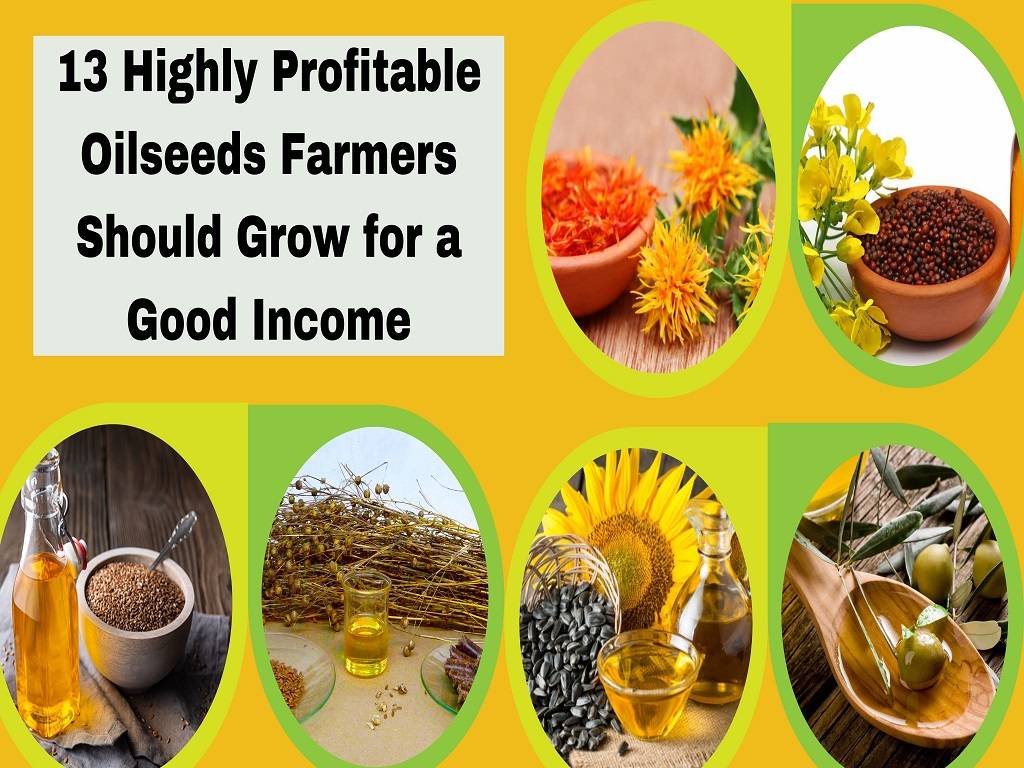
Are you interested in starting a commercial oilseed farming business? Commercially, crops with oil seeds are very important. Additionally, the many oilseed varieties have a significant effect on global trade. Also, these crops are extremely profitable.
Different forms of oilseed farming offer lucrative income-generating businesses for small and marginal farmers. For the most part, several oilseeds are required to produce different kinds of vegetable oil and edible oil. These oils are used all over the world for cooking, personal care, therapeutic benefits, and many more uses.
Oilseeds are not items that spoil quickly. When compared to other fruits and vegetables, they have a longer shelf life. But for this kind of farming, you need enough land, irrigation, and agricultural inputs.
Here’s a list of the most profitable farming oilseeds you can grow for a good income:
Cotton Seed
The cotton plant's seed is known as cottonseed. Popular cooking and salad dressing oils include cottonseed oil. It is also an important factor in the production of margarine. Cottonseed is the most widely produced crop in the world, followed by soy, maize, and canola.
Flax Seed
Canada, the United States, and China are the main nations that produce flax. Flax grows best in fertile soil. Flax seeds often come in two main colors: brown and yellow or golden. Linseed or flaxseed oil is a vegetable oil made from flax seeds. It is also one of the first commercial oils. Linseed is ideal for the production of paints, varnishes, printing, and other products due to its distinct drying property. Also used as an edible oil in small quantities.
Palm Kernel
Traditionally, palm oil has been used in food. Between 85 and 90 percent of palm oil is used in food products including margarine, shortening, cooking oil, confectionery fats, etc. Only 10-15% of palm oil is used for purposes other than food. About 70% of this is used as a surfactant in applications for food or other products.
Celery Seed
The celery plant typically grows to a height of 30 to 60 cm, is upright, has prominently joined stems, and has well-developed leaves on long, extended petioles. The compact, ovoid, stiff fruit is 1 to 1.5 mm in length and 1 to 2 mm in diameter. It has one tiny, brown seed within.
Castor Seed
The primary raw material used to make castor oil is castor seeds. In general, castor oil is a core part of hair care, skin care, and other health advantages in the beauty industry. Castor oil is a little stickier than other types of oil since it has a slightly higher viscosity.
Groundnut
Peanut crop provides the growers with a satisfactory return on their investment. To cultivate groundnuts, you must have a land area of a reasonable size. Commercial groundnut production is a profitable business.
Mustard Seeds
Farmers that plant mustard seeds enjoy quick rewards. Moreover, this crop is simple to grow. Full sun and cool temperatures are preferred by mustard plants. Moreover, this seed thrives in temperate areas. Among all oilseeds, mustard seed is one of the most widely consumed. Typically, it takes three to ten days for mustard seeds to germinate. The United States, Canada, Nepal, Hungary, and India are a few of the major nations that produce mustard.
Olive Oilseed
Olives are found mainly in the Mediterranean area, as well as in a few locations in Asia and Africa. The olive also serves a variety of purposes, including cuisine, alternative medicine, and heart health. In general, the cultivar, altitude, harvest period, and extraction method all affect the composition of olive oil. Oleic acid makes up 83 percent of its composition, with linoleic acid and palmitic acid making up lower percentages.
Rapeseed
The major ingredient in rapeseed oil production is rapeseed. This oil is typically used for biodiesel, human consumption, and animal consumption. Erucic acid is typically present in high concentrations in rapeseed oil. This seed's production is rising quickly on a global scale.
Safflower
An annual broadleaf oilseed crop is safflower. Nearly 75% of the linoleic acid in linoleic safflower oil is linoleic acid. And it costs a lot more than oils made from corn, soybean, cottonseed, peanuts, or olives. Safflowers of this kind are generally used to make soft margarine and other edible oil products like salad dressings.
Sesame
Sesame is a blossoming plant. It was domesticated more than 3000 years ago, making it one of the oldest oilseed crops ever. Sesame also contains one of the largest amounts of oil of any seed. The well-drained, fertile, medium-textured, and pH-neutral soils are optimal for high-yielding crops.
Soybean Oil Seed
One of the most often used cooking or eating oils worldwide is soybean oil. Additionally, this crop guarantees the growers a healthy profit margin. In wetter climates and during the rainy season, soybeans thrive. The ideal range for the plant is between 22 and 32 °C. The crop also provides a speedy return. It takes between 70 and 80 days to harvest.
Sunflower
As long as the soil is not saturated with water, most sunflowers are incredibly resilient and simple to grow. Most are drought and heat tolerant. Sunflowers flower well in long, hot summers and grow best in areas with direct sunlight (6–8 hours per day).
Watch for ripeness to harvest the sunflower seeds. About 30 to 45 days after bloom, the bracts start to dry up and turn brown, and the back of the flower head changes from green to yellow. The moisture content of the seeds is around 35% at this time. Typically, seeds are prepared for harvesting when the head becomes brown on the back.
















